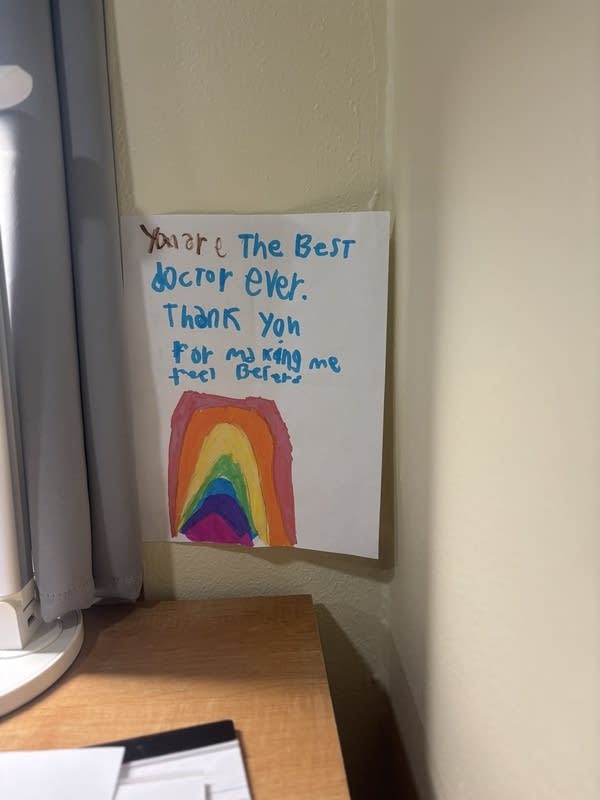ARTICLE AD BOX
When Kim Lang arrived at her doctor’s office for a regular checkup, she had a list of concerns to discuss with her physician, Dr. Nick Krawczyk.
Lang, 64, said her arthritis was acting up. She’d noticed some hair loss and dermatological issues, too. Krawczyk suggested some blood work — two tests, that, out of pocket, Lang will only pay seven dollars.
That’s because Krawczyk provides those tests to his patients at cost. He’s a direct primary care provider, which means that he charges his patients a monthly subscription fee to see him — in Lang’s case, it’s $110 a month. There’s no insurance involved, so no co-pays and no premiums.
“If I sent it through regular insurance, and I had to pay for all of it and it came back, it would probably be $75, $90 and because I haven’t reached my deductible, that would all be out of my pocket,” said Lang of the test costs. “So, do I want to pay $70 or $7? No brainer!”

Lang, who coincidently used to work in the health insurance industry, is among a growing number of patients who are ditching traditional health insurance for direct primary care. She still carries a catastrophic plan for big, unexpected health issues.
But she said that plan, plus the direct primary care subscription, is much less expensive than what she was paying before.
And in return, she gets longer visits with Krawczyk because he has fewer patients, and he spends much less time on paperwork and haggling over coverage with insurance companies. She can text him or even see him on the weekends in a pinch, if needed. And Krawczyk can refer her to specialists when necessary.
“If you go to a regular fee-for-service clinic, you see the doctor (for) maybe seven minutes,” she said. “What are you going to find out in seven minutes? Not a lot. Dr Nick will spend two hours with me if I need to.”
That personalized attention is a big reason some patients are choosing direct primary care, said Zirui Song, who is a health care policy expert at Harvard Medical School.
And it can be more affordable for some people.

“The question is, when you add together the premium, the co-pay, the co-insurance and the deductible, is that more than or less than the monthly subscription fee for a private practice model, plus the private out-of-pocket payments you pay for every lab test and chest X-ray and generic medicine,” he said.
Direct primary care subscriptions are best for people who have uncomplicated health situations. The model can be appealing for people with kids, who generally don't often need specialized care.
Beth Commers followed her doctor when she opened a direct primary care clinic in Saint Paul. She still has coverage through her employer. But for an additional $90 a month, Commers said she feels like she’s getting more for her money.
“I liked her as a physician. She always listened to me. She heard what I had to say, and she didn't jump right to an answer. She would lay out the possibilities of whatever was going on, and then we would make a decision together,” said Commers.
Commers’ teenage daughter goes to the clinic, too, for an additional $30. Commers said it was a good fit when her daughter experienced symptoms associated with long-COVID that were hard to figure out. Her daughter had seen other doctors, faced a battery of tests and was taking various medications to relieve her symptoms.
But Commers said her family was in the dark about what to do next, until turning to the direct primary care physician.
“[Our doctor] got the reports, and she wrote down all the prescriptions that our daughter had been put on, and just started connecting the dots for us,” she said.
Subscription based clinics are few but growing in number
According to the Direct Primary Care Alliance, there are more than 400 such clinics in the country - with 12 in Minnesota. On average, these clinics see about 400 patients each.
With fewer patients and no insurance hassles, Song said his research suggests that like their patients, doctors see an array of benefits, too.
“More autonomy, freedom from working through prior authorizations and health insurance, a better work life balance and improved job satisfaction,” Song said.
And that’s certainly been the case for Krawczyk. He said the pressure to see dozens of patients quickly at his fee-for-service clinic, followed by hours of insurance paperwork, led to burnout.
"I was leaving the clinic between seven or eight every night,” he said. “I have two small children, and I'd be in the clinic for six-to-eight hours on Sundays, doing paperwork, and it's just exhausting,” he said.

And it was unfulfilling. Krawczyk said he took a pay cut when left his fee-for-service clinic. But he said it was worth it. He’s working fewer hours with less stress. Now, Krawczyk can spend a lot more time with his patients, which is why he became a doctor in the first place. He doesn’t mind if they call him on a weekend, because his quality of life is much better overall.
And he said really getting to know his patients can help in better diagnosing them.
“In this model, I find out so much more about what’s going on in their life,” he said.






 English (US) ·
English (US) ·